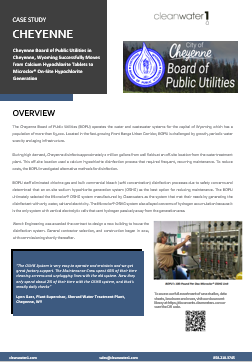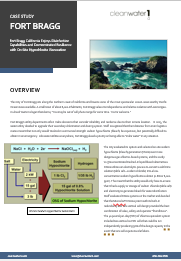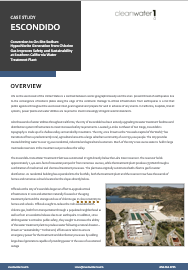[Case Study]HICKORY, NORTH CAROLINA Improves Disinfection Capabilities and Operator Safety with Modern On-Site Hypochlorite Generation
Much has changed over the years in Hickory, North Carolina. Founded in 1863, the City of Hickory was ideally situated to capitalize on the booming furniture and textiles industry in the region. Nestled between major areas including Asheville, Charlotte, Winston-Salem, and Greensboro and located on the site of two intersecting railroads, the town became the main train stop for Catawba County as raw materials exports thrived. Eventually the resourceful residents developed the skills and facilities to produce their own finished goods, no longer an intermediary for the large producers up north, and “Craft City” was born.
Though textile mills and furniture factories have declined, they are still an important part of the local “hand-crafted” economy. In their place, Hickory has cultivated a vibrant food and arts culture, staying true to its history and moniker by converting mills into craft shops, restaurants, distilleries, and breweries as the town has evolved. As the town grew and adapted into modern-day Hickory, Craft City’s water treatment plant (WTP) that supplies water for these industries has done the same. Wes Boyd and his team at the plant oversee the production of an average 13 million gallons of water per day (MGD) to over 100,000 people in three counties and manage another three consecutive purchase water systems. The water treatment process is conventional and features nine basins and 14 filters feeding aluminum sulfate (alum), fluoride, and caustic for pH adjustment. The disinfection process, however, is anything but conventional. True to its pioneering history, the City of Hickory became the first water treatment plant in North Carolina to eliminate the use of hazardous chlorine gas as its disinfectant source in favor of on-site generated sodium hypochlorite. In 2002, the City evaluated its options and selected on-site sodium hypochlorite (bleach) generation (OSHG) over more dangerous chlorine-based systems, including more costly 12.5% concentrated liquid bleach alternatives. The City installed two horizontal cell OSHG skids, each capable of generating approximately 600 pounds-per-day (PPD) of chlorine equivalent. OSHG technology allows users to produce a safer chlorine disinfectant on-demand for a fraction of the cost of bulk delivered hypochlorite. OSHG utilizes an electrolytic process to convert a salt brine solution (table salt – sodium chloride) into a low-concentration sodium hypochlorite solution (0.8% or 8,000 ppm).




